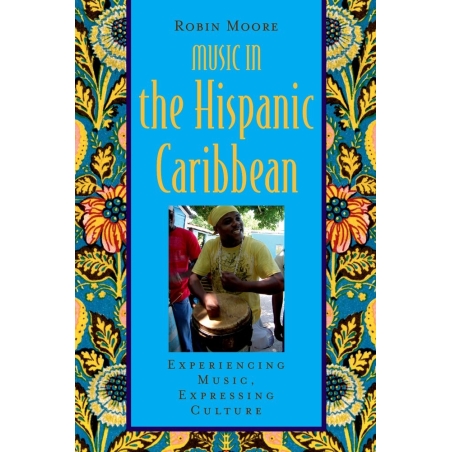Music in the Hispanic Caribbean explores the musical and cultural traditions of the Spanish-speaking countries of the Greater Antilles (Cuba, the Dominican Republic, and Puerto Rico), a relatively small group of islands with a surprisingly wide-reaching influence on music. The birth place of enduring styles such as salsa and meringue and up-and-coming genres like reggaeton, the music of the region has yet be examined in a standalone volume. Moore uses three themes-the cultural legacy of the slave trade, the creolization of Caribbean musical styles, and the impact of colonialism and race relations-to survey the region and draw parallels and contrasts between its various traditions Designed to be used as one of several short and inexpensive case study volumes in the Global Music Series, this volume is appropriate for introductory undergraduate courses in world music or ethnomusicology and for upper-level courses on Caribbean and Latin American music and/or culture. Based on the autho
CONTENTS
Foreword
Preface
CD Track List
1. Introduction
Defining the Caribbean
Music and Race in the Caribbean
Creolization and Diaspora
2. Music and Spanish Colonization
A Brief History of Colonization
Spanish-Derived Music
Puerto Rican Seis
Cuban Punto
Folk Catholicism and the Dominican Salve
3. Cultural Legacies of the Slave Trade
History of the Slave Trade
Afro-Cuban Toques de Guiros
Afro-Dominican Salves
Puerto Rican Bomba
4. Creolized Dance Music
Dominican Merengue
Cuban Son
Puerto Rican Plena
New York Salsa
5. , Transnational Caribbean Musics
The Colonial Contradanza
Bolero and Bachata
Reggaeton
6. Political Song
The Rise of Nueva Cancion
Struggles for Independence in the Hispanic Caribbean
Puerto Rican Nueva Cancion
Dominican Nueva Cancion
Cuban Nueva Trova and Rap
7. Dialogues With Blackness
Early Representations of Blackness
Creole Heritage and Classical Music
Latin Jazz
Glossary
Resource Guide
References
Index




